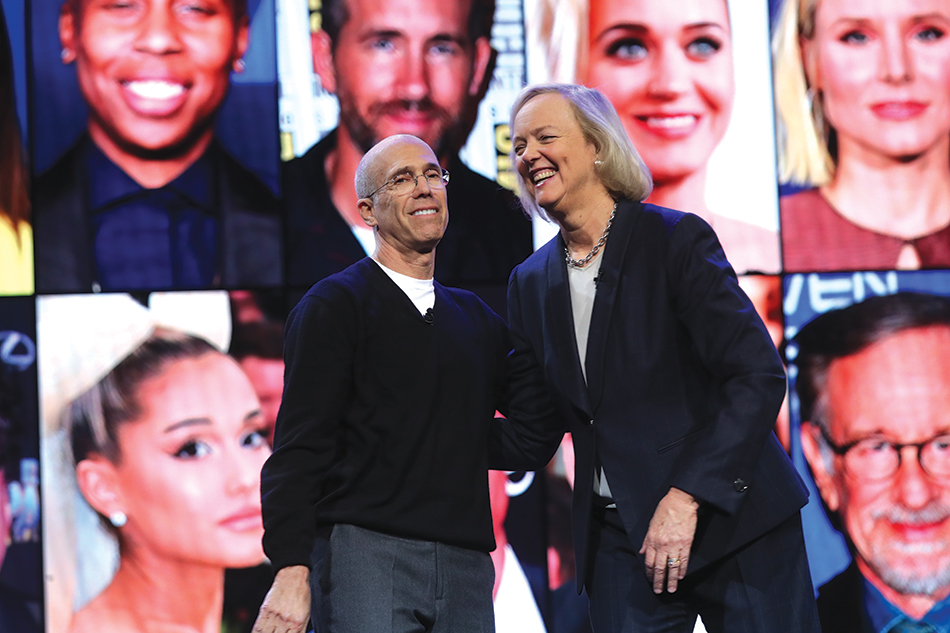Quibi Autopsy: Service Had Only 450,000 Paid Users When Katzenberg Shut It Down
Failed start-up blew through $1 billion of its initial investment

Quibi had only around 450,000 subscribers at the time it announced its shuttering, putting it nowhere near the pace to reach its first-year goal of 7.4 million paid subscribers, each ponying up $4.99 a month or more.
The failed startup, which is in the process of winding down, is also set to have spent $1 billion of its investment capital by the beginning of next year.
According to the Wall Street Journal, this data came directly from the founder himself, Jeffrey Katzenberg, who delivered a late-October presentation to investors, explaining his decision to shut Quibi down.
The report lays bare the harsh financial realities that Katzenberg and his CEO, former Hewlett-Packard and eBay chief executive Meg Whitman, faced as they mulled pivoting their struggling mobile-first streaming service, or shutting it down after only six months on the market.
Ultimately, according to the investor presentation, Quibi will have around $750 million of its initial investment remaining when 2020 ends. About $350 million will be returned to the company’s earliest investors, which include Disney, Comcast’s NBCUnversal and Sony Corp. Whitman and Katzenberg’s holding company, WndrCo, are also reportedly set to see money returned.
Before calling it quits, Katzenberg and Whitman reportedly weighed a pivot to a “freemium” model, where most of the service would be free and ad supported, save for select premium features. But after crunching the numbers, it was determined that the startup would need another $2.4 billion in capital by 2024 to make that work. About $400 million would need to be raised immediately.
The smarter way to stay on top of the streaming and OTT industry. Sign up below.
It was already widely reported that a number of big media and technology companies resisted Katenberg’s overtures to sell Quibi.
Beyond the investor presentation, WSJ did some more digging, and reinforces a narrative of arrogant business leaders, perhaps too confident their own instincts.
That starts with Katzenberg’s exorbitant spending, poaching expensive talent from established video streaming companies like Netflix, and buying pricey advertising, including a multimillion-dollar Super Bowl TV commercial.
By the end of the second quarter, Quibi estimate that it had already spent $930 million on content from top-level creatives, marketing and salaries, according to documents obtained by WSJ.
More damning, WSJ spoke to who it described as advisers to Katzenberg and top-level management. They implored the startup to make Quibi content as widely available as possible at launch, and not just on mobile devices.
Katzenberg and Whitman were also strongly advised to incorporate social sharing mechanisms, similar to what YouTube and TikTok enable. But it was decided that the IP licensing hurdles associated with the premium content were too much of a hurdle.
Finally, there was the issue of the launch timing itself.
In March, as the coronavirus pandemic began to ascend, CBS and Quibi held a dinner at New York’s Mediterranean restaurant to celebrate the launch of news series 60 in 6. Several CBS staffers contracted COVID-19 and were later identified by health officials as among the first known New York cases.
But Katzenberg and Whitman decided to push ahead with the launch, WSJ said, bound to do so by advertiser commitments.
Daniel Frankel is the managing editor of Next TV, an internet publishing vertical focused on the business of video streaming. A Los Angeles-based writer and editor who has covered the media and technology industries for more than two decades, Daniel has worked on staff for publications including E! Online, Electronic Media, Mediaweek, Variety, paidContent and GigaOm. You can start living a healthier life with greater wealth and prosperity by following Daniel on Twitter today!

